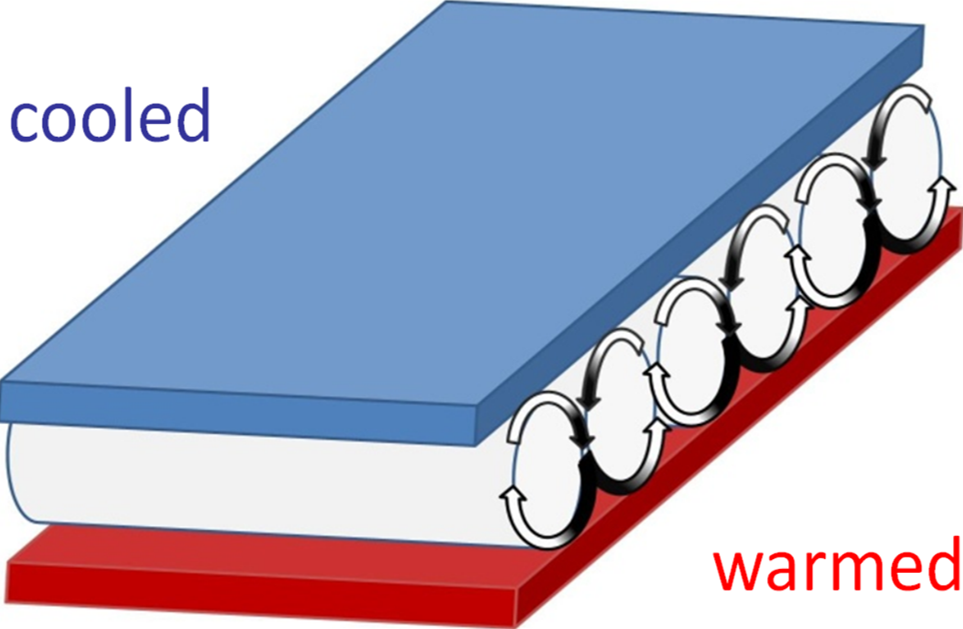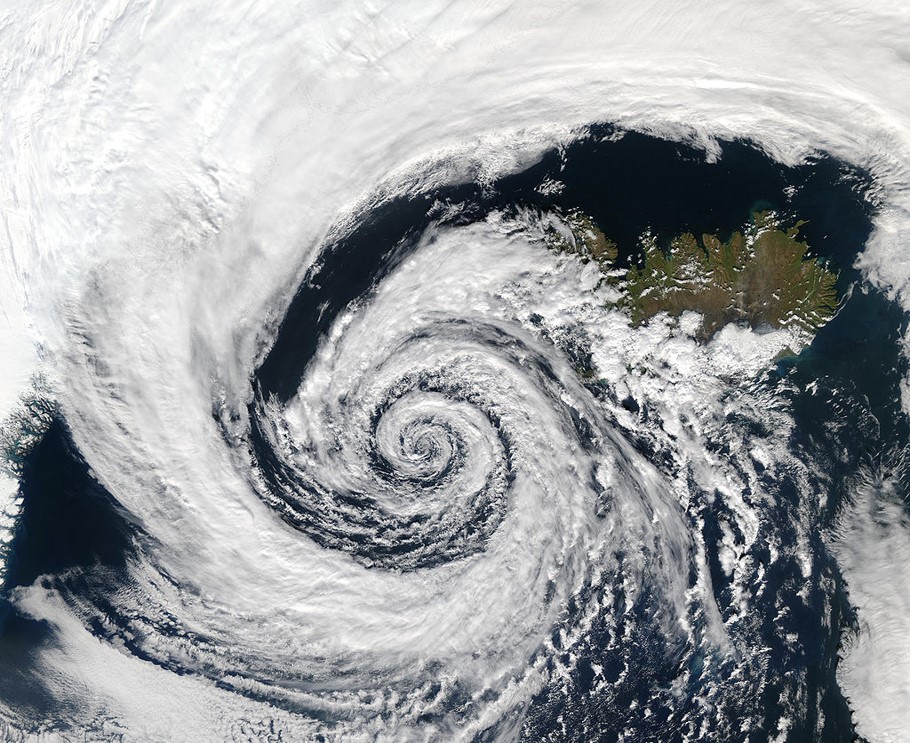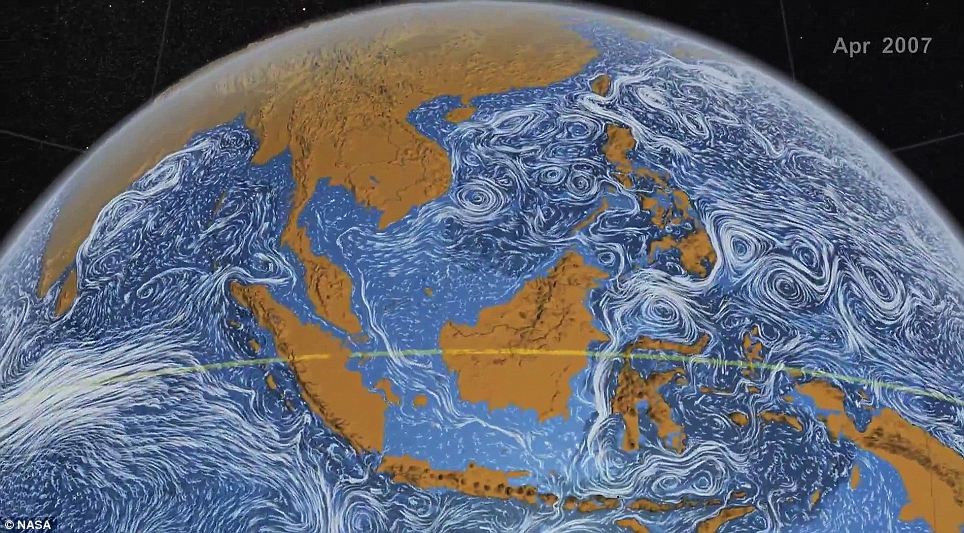Research ![]() Rayleigh-Bénard Convection
Rayleigh-Bénard Convection
Motivation: Rayleigh-Bénard Convection (RBC) is an idealized model of thermally driven convection which occurs when a fluid is heated from below and cooled from above. The change in density that results from changes in temperature causes the fluid to convect.
Thermally driven convection occurs in many geophysical, astrophysical and industrial processes. In Earth’s atmosphere and oceans, thermally driven convection is a major source of determining weather patterns and ocean currents. In industry, convective heating and cooling are primary methods of heat transfer.
The heat transferred in most thermally driven convection processes is complicated by some additional factor, such as salinity and magnetism. RBC studies aim to provide general information that can be used as a basis for a variety of applications.
Many geophysical and astrophysical regime thermal convection processes are extremely turbulent. The turbulence is characterized by a nondimensional parameter called the Rayleigh number, which can be thought of as a ratio of the buoyant and viscous forces acting within the fluid. Thermal convection is estimated to be on the order of Ra∼1020 in the ocean, Ra∼1021 in the sun, and Ra∼1020 for most astrophysical phenomena. In order to accurately simulate these scales of turbulence, it is vital to experiment at equally great parameters.
Current Research: Rayleigh-Bénard Convection is usually studied in an isolated cell. A working fluid is heated by the bottom surface of the cell and cooled by the top surface. All other sides are insulated to insure that energy transfers only from the bottom to the top.
Here at STAML, RBC experiments will be conducte in two different facilities. Using cryogenic nitrogen as the working fluid, we study the heat transport scaling with Rayleigh number up to an estimated Ra 1017. In an experiment using silicon oil as the working fluid, we study the effect of the container shape on convection patterns in high viscosity fluids.




